Cake pan substitution is the topic of most recipe questions I receive every day. So here you’ll find some helpful tips when It comes to adapting baking recipes.
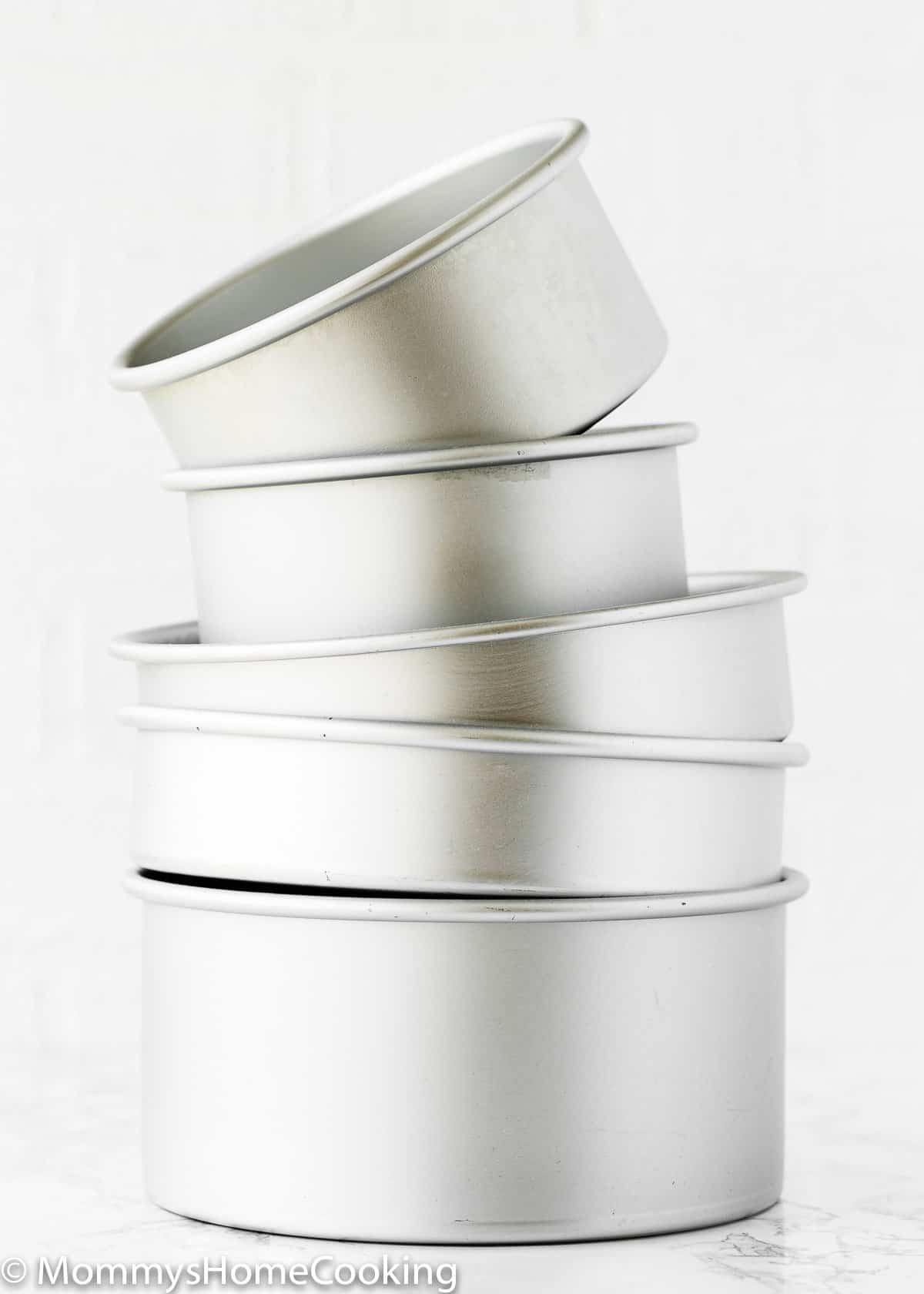
TIPS TO SCALE A RECIPE & CAKE PAN SIZES
Cake pan substitution is a topic that raises many questions. I receive many messages daily asking me how to adapt a recipe for a different cake pan or scale it up or down. I wish I have a simpler answer, but adapting recipes is complicated. This is especially true for eggless recipes.
It requires several calculations, which leads to a big chance of error at every turn. It also requires the correct ingredients, precise measurements, and a good batter preparation technique. Plus, personal judgment and intuition in baking the cake itself.
In this post, Tips to Scale a Recipe & Cake Pan Sizes, I will try to explain it as simply as possible, but if you want one more precise method or are into math, check out Food 52’s article on this subject.
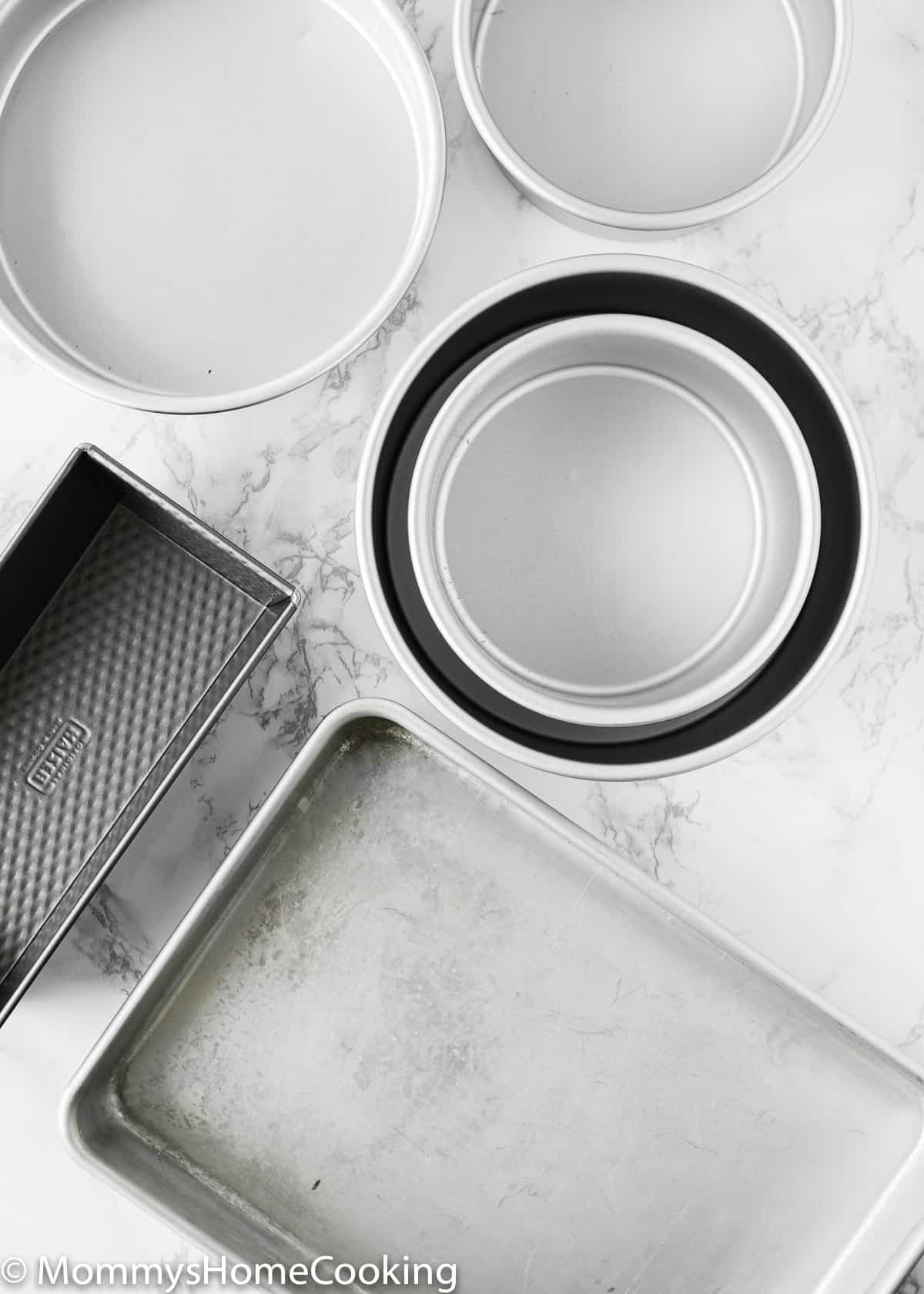
BAKING PANS
As I mentioned before, cake pan substitution is the subject of most recipe questions I receive. I totally get it… Unless you have a fully stocked kitchen with lots of baking pans, the chances are that you’ll run into a recipe where you don’t have the specific pan required.
My # 1 Tip: Whatever pan you are using, fill a pan between one-half and two-thirds of the way full. Do NOT force more batter than recommended into the pan. Instead, if you have extra batter, use it to make some mini-baked goods.
MOST COMMON PANS
Baking pans come in a wide range of sizes, from a round cake pan to a Bundt pan. Different size pans hold different capacities (volumes) of batters, and this must be taken into account when substituting one pan size for another in a recipe. These are my most used cake pan sizes:
Conversions
Dimensions: 1 inch = 2.54 cm
Volume: 1 cup = 240 ml
Round Pans (2-in tall):
6-in = 15 cm = holds 4 cups batter (total capacity)
8-in = 20 cm = holds 6 cups batter (total capacity)
9-in = 23 cm = holds 8 cups batter (total capacity)
Square Pans (2-in tall):
8×8-inch square = 20 x 20 cm = holds 8 cups batter (total capacity)
Rectangular Pans (2-in tall):
13×9-inches = 33 x 23 cm = holds 14 cups batter (total capacity)
Springform Pans (2 1/2 inches tall)
9-in = 23 cm = holds 10 cups batter (total capacity)
10-inch = 25 cm = holds 12 cups batter (total capacity)
Bundt Pan – size varies because of various designs
10-in = 25 cm = holds 12 cups batter (total capacity)
Loaf Pans
8.5 x 4.5-inch = 23.5 x 12.7 cm = holds 6 cups batter (total capacity)
9×5 inch = 23 x 13 cm = holds 8 cups batter (total capacity)
For more Pan Dimensions and Volumes, check out this article on Joy of Baking.
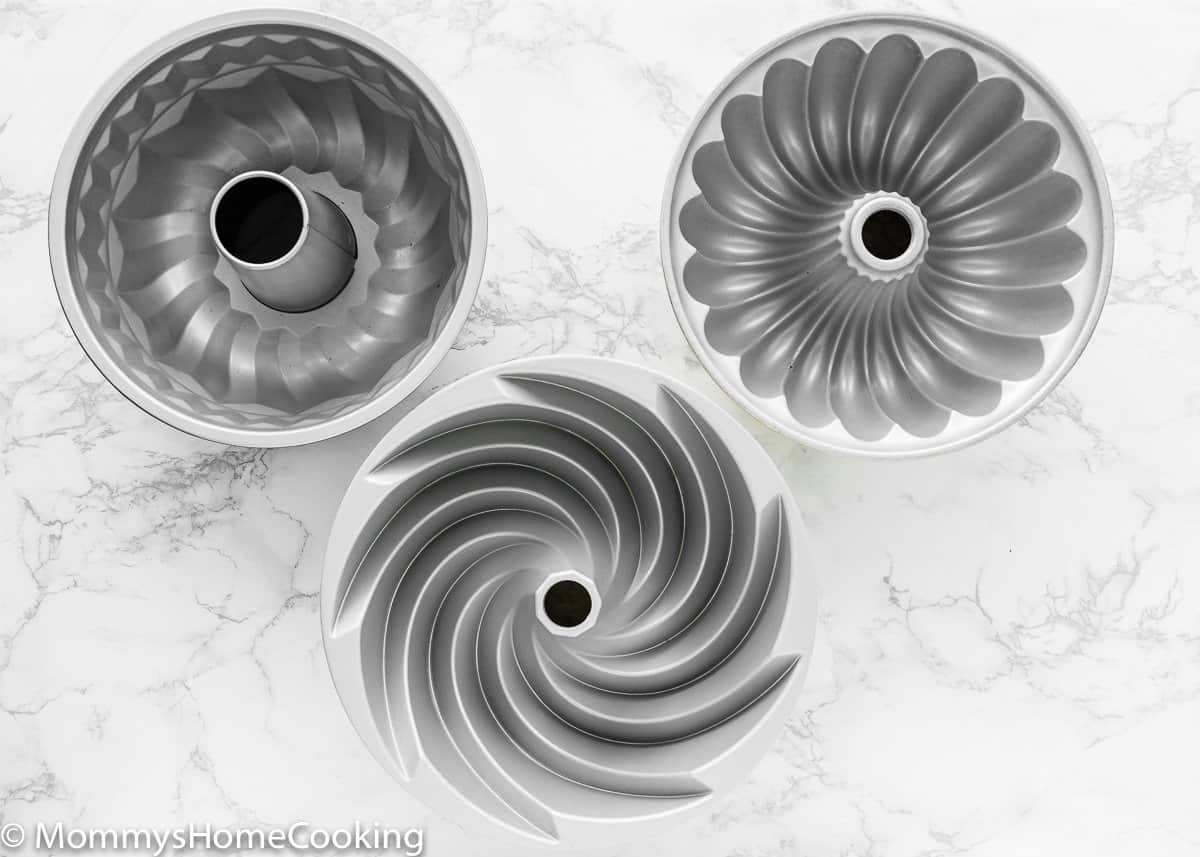
KEEP IN MIND
1 – The volumes listed above mean you are filling the pan all the way to the top with batter, which isn’t recommended for baked goods. Unless otherwise noted, fill pans around 2/3 full for best results. You need to leave room for rising.
2 – If you use a larger pan than asked for in a recipe, this will change the depth of the batter (shallower); therefore, the batter will bake faster. The same is the other way around. Using a smaller pan than asked for in a recipe will also change the depth of the batter (deeper), so the batter will take longer to bake.
SCALING UP
If I want to scale up a recipe, what works for me most of the time is to make two batches of batter using the original measurements. Then, I use leftover batter (if any) to make a few cupcakes and freeze them for another time. In my opinion, it’s better to have extra batter rather than not enough.
PRO TIP: For best success, taste, and texture, I always recommend making separate full batches instead of doubling. Doubling risks over-mixing or under-mixing and could overwhelm your mixer.
SCALING DOWN
Scaling down a recipe usually means simply cutting a recipe in half. But the science of baking makes this risky.
According to my experience, you are always better off simply baking a full recipe in several smaller baking pans rather than attempting to cut in half all the ingredients. Then, if you still have extra batter, use it to make mini-baked goods.
If scaling down in half, try and find a pan that’s about half the size in volume as the original recipe calls for, so there are no major changes in the deep of the batter.
PRO TIP: You can measure the volume of a pan by seeing how much water it will take to fill it up.
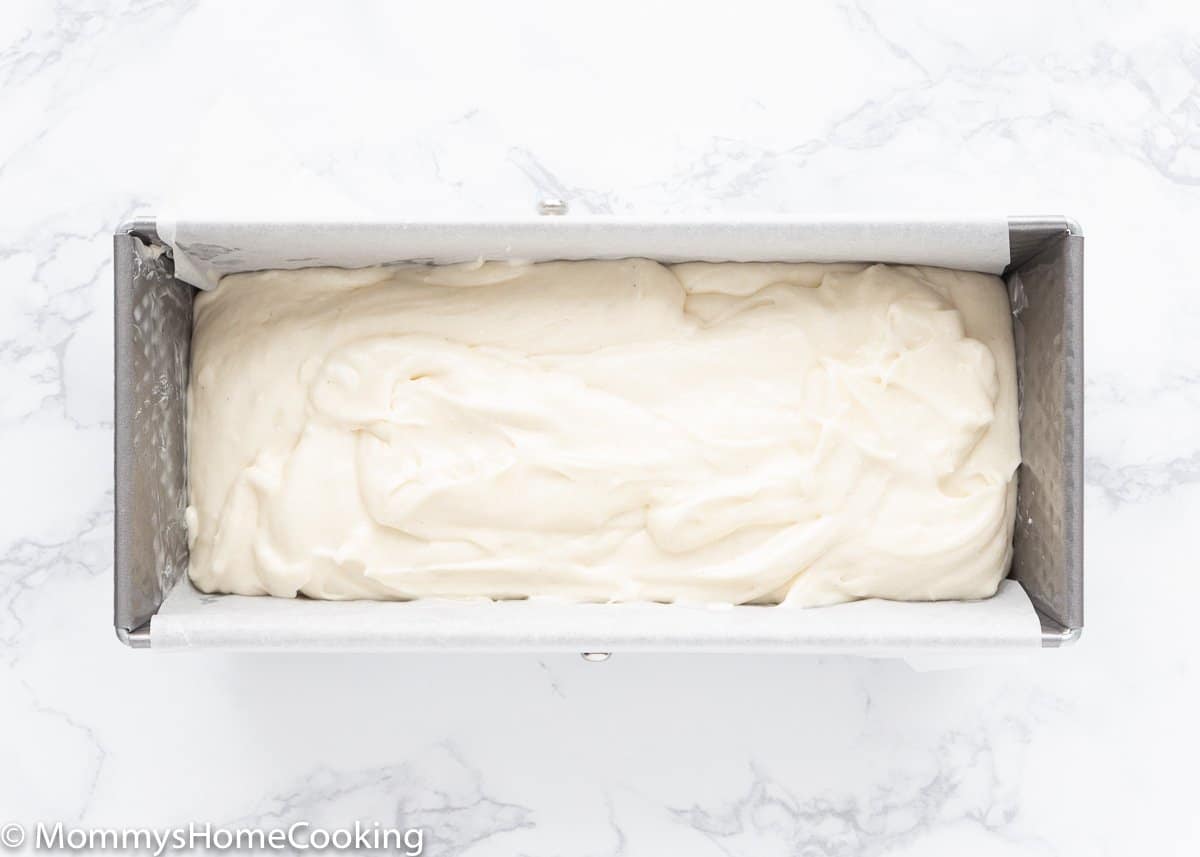
TEMPERATURE
Whatever temperature is listed in the recipe is the best temperature for baking that cake. Period. Do NOT change the temperature.
BAKING TIME
Regardless you are scaling down or up a recipe, the baking time will likely need to be adjusted.
The adjustment will vary depending on whether you’re scaling up or down the original recipe and the pan size. As I always say, every oven is different, so baking times always have to be taken with a grain of salt. Also, oven thermostats can be wildly off, and that will affect baking time.
As a general rule, cakes in larger pans than the original (called in the recipe) will generally bake faster. On the other hand, cakes in smaller pans will often take longer.
The best and safest option will always be to watch the cake closely and let physical cues, such as color, texture, and aroma, be your guide.
Cakes, cupcakes, and quick bread will bounce back when lightly touched and are done when a toothpick inserted in the center comes out clean. Most cookies are finished when they begin to turn golden brown on the edges.
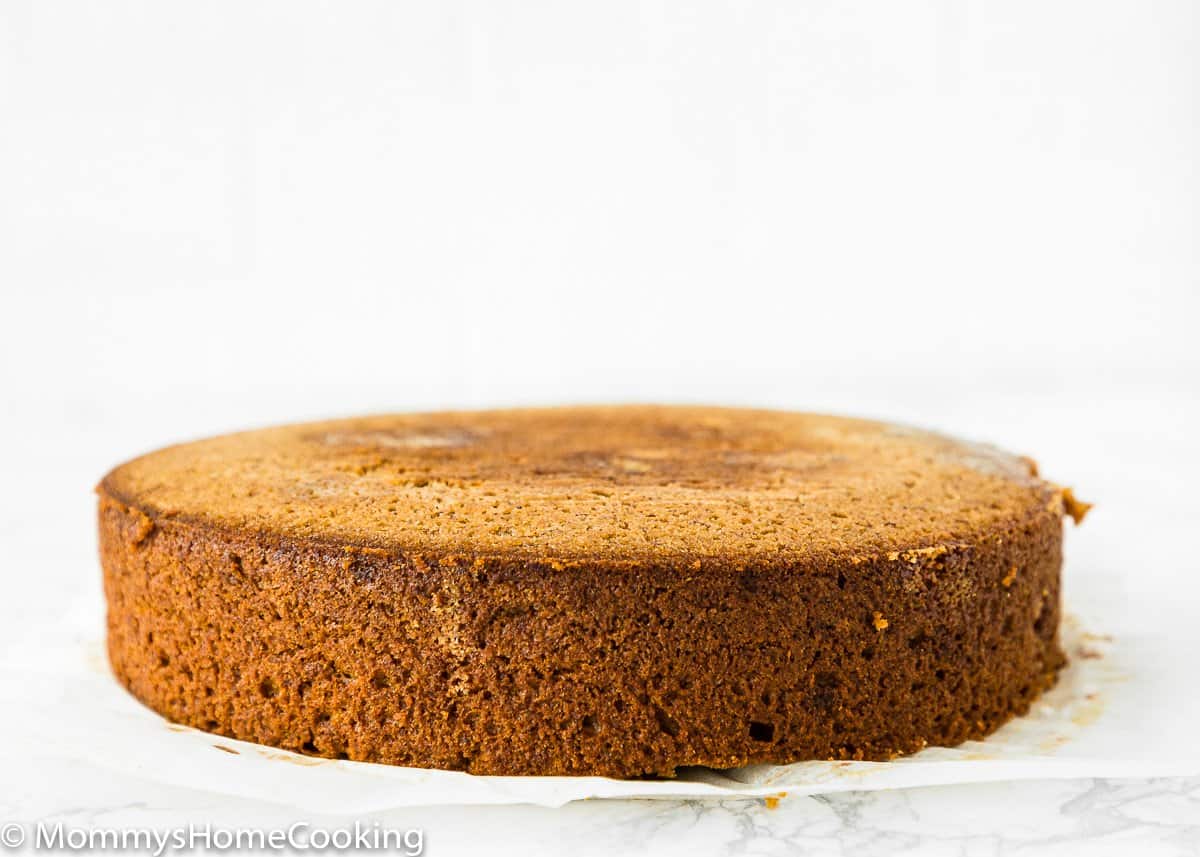
REDUCE THE MARGIN OF ERROR
To reduce the margin of error, I always recommend printing the recipe and writing down the adjustments you are going to make manually before jumping in. All it takes is a moment’s distraction to accidentally include one ingredient at the original amount, almost always resulting in big cake failure.
I’ve been there myself on more occasions than I’d care to admit, and I do this for a living!
IMPORTANT TIPS
Whichever pan you are using, fill it between one-half and two-thirds of the way full. Do NOT force more bather than recommended into the pan.
Whether you are scaling down or up a recipe, your baking time will likely need to be adjusted.
Always use the temperature that is listed in the recipe as the best temperature for baking. Period. Do NOT change the temperature.
FREQUENTLY ASKED QUESTIONS
How Much Cake Batter Do I Need?
Fill a pan between one-half and two-thirds of the way full. Do NOT force more bather than recommended into the pan. Instead, use the extra batter to make some mini-baked goods.
How Can I Reduce the Margin of Error?
Whether scaling up or down, I always recommend printing the recipes and writing down the adjustments you are going to make manually before jumping in. All it takes is a moment’s distraction to accidentally include one ingredient at the original amount, almost always resulting in big cake failure.
I’ve been there myself, on more occasions than I’d care to admit, and I do this for a living!
How Should I Adjust the Oven Temperature?
Whatever temperature is listed in the recipe is the best temperature for baking that cake. Period. Do NOT change the temperature.
How Long Should I Bake It?
It will depend on whether you are scaling up or down the original recipe and the pan size. As I always say, every oven is different, so baking times always have to be taken with a grain of salt. Oven thermostats can be wildly off, and that will all affect baking time.
As a general rule, cakes in larger pans than the original called in the recipe, will generally bake faster. Cakes in smaller pans will often take longer.
The best and safest option will always be to watch the cake closely and let physical cues, such as color, texture, and aroma, be your guide.
Cakes, cupcakes, and quick bread will bounce back when lightly touched and are done when a toothpick inserted in the center comes out clean. Most cookies are finished when they begin to turn golden brown on the edges.
SAMPLE
For example, my Eggless Vanilla Cake Recipe yields around 12 cups of batter, which I divide between 3 8-inch round cake pans – each holds 6 cups of batter! But since it’s recommended to fill the cake pan up to 3/4, I fill each cake pan with 4 cups of batter each.
Without scaling down or up the original recipe, I could bake it in:
- Four 6-in round cake pans – 3 cups of batter each.
- Two 9-in round cake pans – 6 cups of batter each.
- One 13×9-in rectangular pan – 9 cups of batter (use the leftover batter to make cupcakes).
- Two 9×5-in loaf pans – 6 cups of batter each.
FINAL THOUGHTS
Once again, adapting recipes requires attention to detail, so take your time, make careful notes, avoid substitutions, measure ingredients correctly (a kitchen scale is highly recommended), pay close attention to technique, and always check on the cake as it’s baking.
The next time you have a question about cake pan sizes & conversions, I hope you find your answer in this post so you can confidently make the adjustments needed.
Eggless Cake Recipes You’ll Love
- Eggless Vanilla Cake Recipe
- The Best Eggless Chocolate Cake Ever
- Eggless Red Velvet Cake
- Eggless Lemon Cake
- Easy Eggless Strawberry Cake
- More Cake Recipes
What are your Tips for Scale a Recipe & Cake Pan Size?
